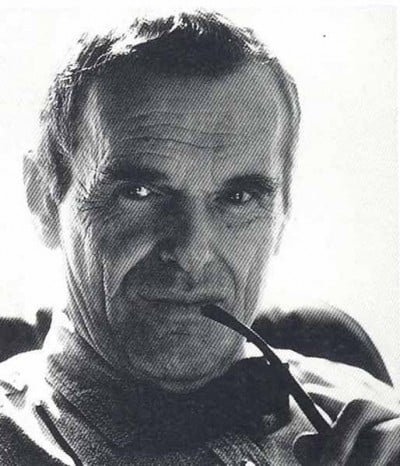What I learned from Robert Krulwich about “Powers of Ten”
You’ve probably seen this before, or at least a knockoff of it:
It’s one of my favorite films by a filmmaker1 whom I sometimes call my “patron saint.” As a piece of science communication, it’s timeless and beautiful and informative and basically perfect.
But I didn’t really get it until I had a passing conversation with Robert Krulwich a few years ago.
NPR’s Science Desk had arranged for me to meet Robert because they wanted us to work together on a video. I was filled with a deep desire to seem impressive to this man. Robert cut to the chase. He asked:
What is your dream project? What would you make if someone said, “you can make anything you want?”
I burbled out something about adapting Godel Escher Bach into a film, or a graphic novel, or both. I said I liked unpuzzling and making sense of ideas that seem “too hard” at first blush. I told him that my dream was to someday make something as perfect as “Powers of Ten.” I rambled on a bit about the craft of it, its formal qualities, the sublime marriage of graphic design and cinema and intellectual making-sense.

Robert didn’t seem interested in that stuff. He politely waited until the end of my little soliloquy and then said, “Well you know, what it’s really about is showing how whether you zoom all the way out or all the way in, everything ends up looking the same. That’s what’s so great about it.”
This wasn’t exactly a unique insight, and yet it had never occurred to me. I was too in love with the intellectual and formal mechanics of the film to really see where its heart was.

Robert and I did end up working together on a video, and this brief conversation foreshadowed how our collaboration went. My first two drafts of the video were all about making it as visually “innovative” as possible. Robert threw them out and kept making me start over. He kept quashing my urge to make something that “seemed impressive.” He kept forcing me to focus on the heart of the idea, not the head. The emotion, not the razzle-dazzle. Don’t try to impress people. Just take them with you.
That is what “Powers of Ten” does. That was years ago and it’s a lesson I still haven’t fully learned.
When you really get that “Powers of Ten” is not just a fascinating lesson about math, but also a parable about human experience, it’s easy to understand why its appeal has endured for decades.
Last night I was listening to “Everest” by Ani DiFranco (which I haven’t heard since college) and I suddenly had the urge to match it up with the Eames film. They both seemed to be about the same thing. So I stripped the voiceover out of “Powers of Ten” and just laid the song in instead, like a music video. I didn’t know if it would make sense or line up—I just wanted to see what happened.
Here it is:
Kind of beautiful, actually.
